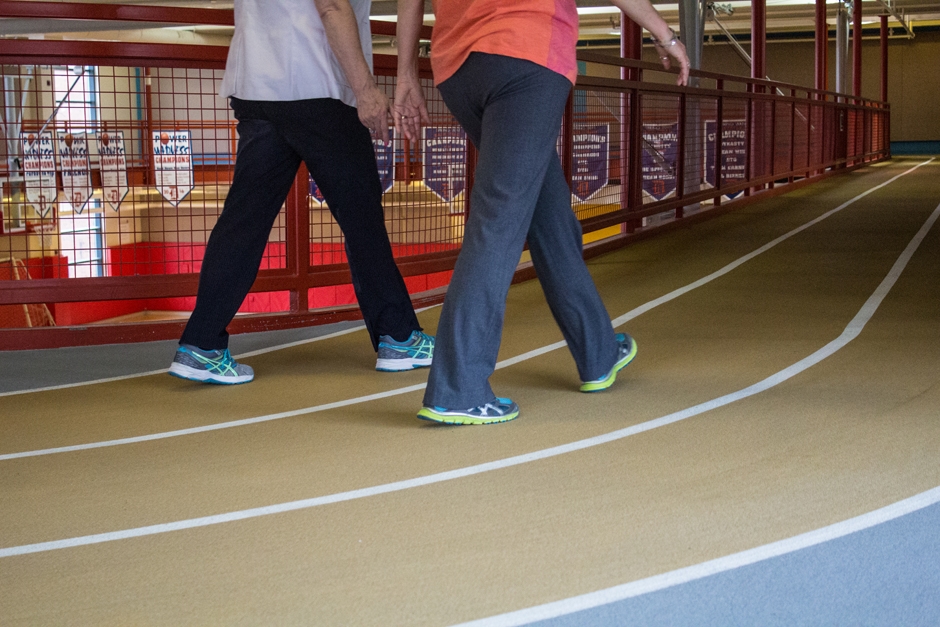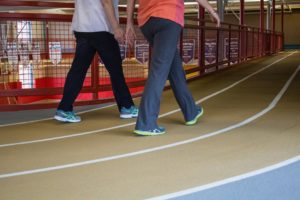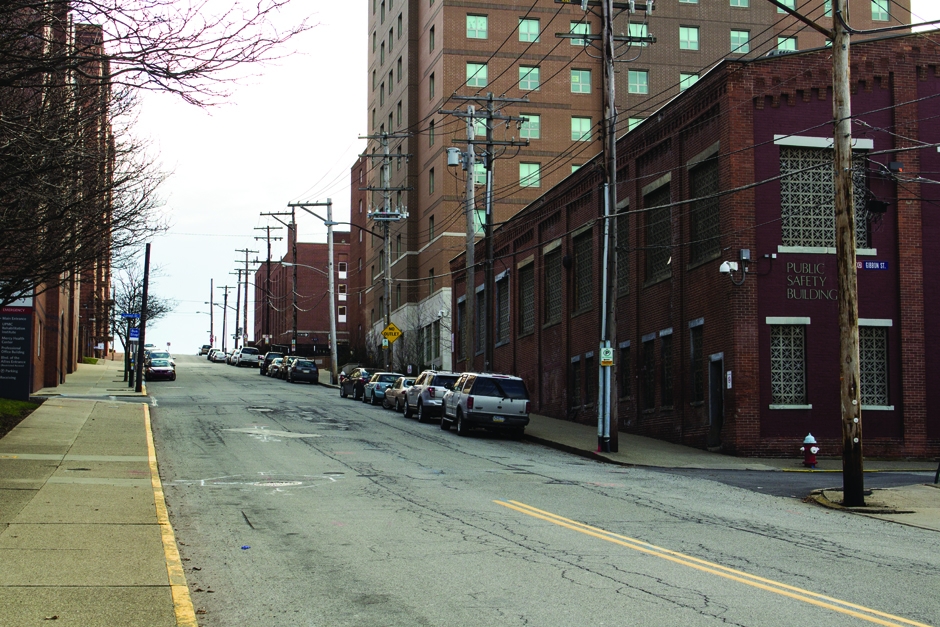

The indoor track is a favorite among runners because it allows for exercise regardless of the weather outside.
By Ollie Gratzinger | Features Editor
If your spring semester kicked off with a New Year’s resolution to finally get into better shape, maybe you’ve made Duquesne’s own gym in the Power Center part of your daily — or every-other-daily — routine.
Opened January 2008, the Power Center is made up of roughly 80,000 square feet dedicated to physical fitness and recreation, all of which is free to Duquesne students and faculty. In addition to its modern cardio equipment and weight-lifting machines, it also boasts basketball and racquetball courts, dance studios, fitness classes, an indoor track and more.
The indoor track is popular, as runners can make use of it no matter what the unpredictable Pittsburgh weather is doing outside. Residing on floor 3M, the track is decorated with various urgent-looking signs that prompt users to run clockwise on Monday, Wednesday, Friday and Sunday, but counterclockwise on Tuesday, Thursday and Saturday.
What’s up with that?
To some seasoned runners, the answer might be obvious, but to someone who only runs out of sheer necessity — and sometimes not even then — it required a little bit of digging.
“The reason for alternating directions is to protect the runners’ joints,” said Amber Lasure, assistant director of recreation, health and fitness at the Power Center. “If you’re consistently running in the same direction, over time, you will develop the lateral side of one joint and the medial side of the opposite joint…which could cause an array of problems in the lower spine.”
Considering that, according to spine-health.com, lower back pain is exceptionally common among runners, this makes a great deal of sense.
“[Lower spine problems] are the worst case-scenario, but for a person who may use the track with regularity, it makes a big difference if they change directions,” Lasure added. “Although the rules are stated that the track direction changes daily, if an individual is running high mileage on the track and needs to change directions periodically, this is okay as long as it’s done with good judgment and safety in mind.”
In addition to changing directions every so often, there are a few other things that can be done to prevent back, spine and joint problems in high-intensity runners. Spine-health.com suggests that all runners stretch prior to exercising to prevent muscle strain and stiffness. The site also notes the importance of well-fitting running shoes. Dress for success, right?
Athletes new to the sport are advised to take things slow, according to Runner’s World. Taking on too much too fast is a great way to hurt yourself. Accept that you’re not going to magically turn into Usain Bolt after a week of running laps and don’t be afraid to go at your own pace.
Despite rumors floating around that switching things up prevents wear-and-tear and keeps the track in better condition, it turns out that the real reason for doing so is to keep the runners in better condition. But there is some merit to the tall tale of track preservation.
“[Alternating directions] does prevent the track from getting worn-down and slippery, but in all honesty, for that to happen, the track would have to be in constant use for about 20 years.” Lasure said. “Typically when we make policies, I err on the side of patron safety over equipment preservation. You can buy a new floor, but not new joints.”




